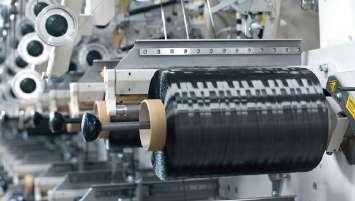MANUFACTURING FOCUS
25
GROWING MANUFACTURING DEMAND DRIVES RECOVERY IN TEXTILE INDUSTRY Textile Value Chain Editorial Team The coronavirus outbreak, which began at the end of 2019, has had an impact on the global textile and apparel industry. Despite the drawbacks, there is a positive side: the coronavirus crisis has been transformed into an opportunity by so many people, organizations, and industries. The textile sector is one of them.
covers, table linens and towels are being purchased more frequently in the United States as the fear of a Covid-19 starts to fade with the introduction of a vaccine. Furthermore, people who work from home have more time to pay attention to the aesthetics of their homes and spend more money on home textiles.
chemical sources, can cause them to react.
Textile exports, which fell by nearly 87 percent to $390 million in the first five months of fiscal year 2020-21, rebounded strongly in the same period this year. Textile exports increased by 787 percent to $3.46 billion in April 2021, albeit on a lower basis. According to Boston Consulting Group, the global textiles and apparel sector market was worth $1.9 trillion in retail in 2019 and is expected to grow at a compound annual growth rate of 3.5 percent to $3.3 trillion by 2030.Quick urbanisation growth in the population and increased disposable income in developing countries were predicted to fuel demand in the future, according to projections released ahead of COVID-19.
Key Points
The Indian textile industry, according to Moody’s Investors Service Company ICRA, is currently on the path to recovery after the worst of the pandemic’s effects have passed. The rating agency modified the Indian textile sector’s outlook for FY2022 to ‘stable’, but warned that risks persist due to the pandemic’s ongoing impact.
Over the past year, the sector has seen its share of difficulties. Nonetheless, the sector has managed to stay afloat despite the challenges. Particularly after the first wave, when orders from western countries began to pour in. The export-driven recovery began in earnest earlier this year. Clothing is one of the most basic human necessities, which is why the online clothing sector had constant demand even during the lockdown.
• Positive Impact of COVID-19 • Importance of clothing • Demand of home textile products rised during Pendamic • Importance of smart textile • Tactical changes that will be required for boosting the country’s overall image in textile sector The market for smart textiles is being driven by advancements in wireless technology and a growing demand for connectivity. Fabrics that can interact with their surroundings are known as smart textiles. Physical stimuli, including thermal, mechanical, electrical, and
According to Upendra Prasad Singh, Secretary, Union Ministry of Textiles, demand for Indian textiles and garments has recovered, particularly in the US, EU, and UK markets, indicating that the industry can increase exports by 33% this fiscal year.
T. Rajkumar, Chairman of the Confederation of Indian Textile Industry, stated that the textile industry has been performing well throughout the value chain for the last year. Lenzing has published its first-quarter financial results. TENCEL lyocell and modal fibres, as well as LENZING ECOVERO viscose fibres, have seen
Bedsheets, pillow covers, and towels are in high demand as a result of the COVID-19 pandemic. With the recovery in global demand, stocks of textile manufacturers focused primarily on exports have steadily risen in recent days. Home textiles such as bedsheets, pillow
Image Source: MNA International
SEPTEMBER 2021





















